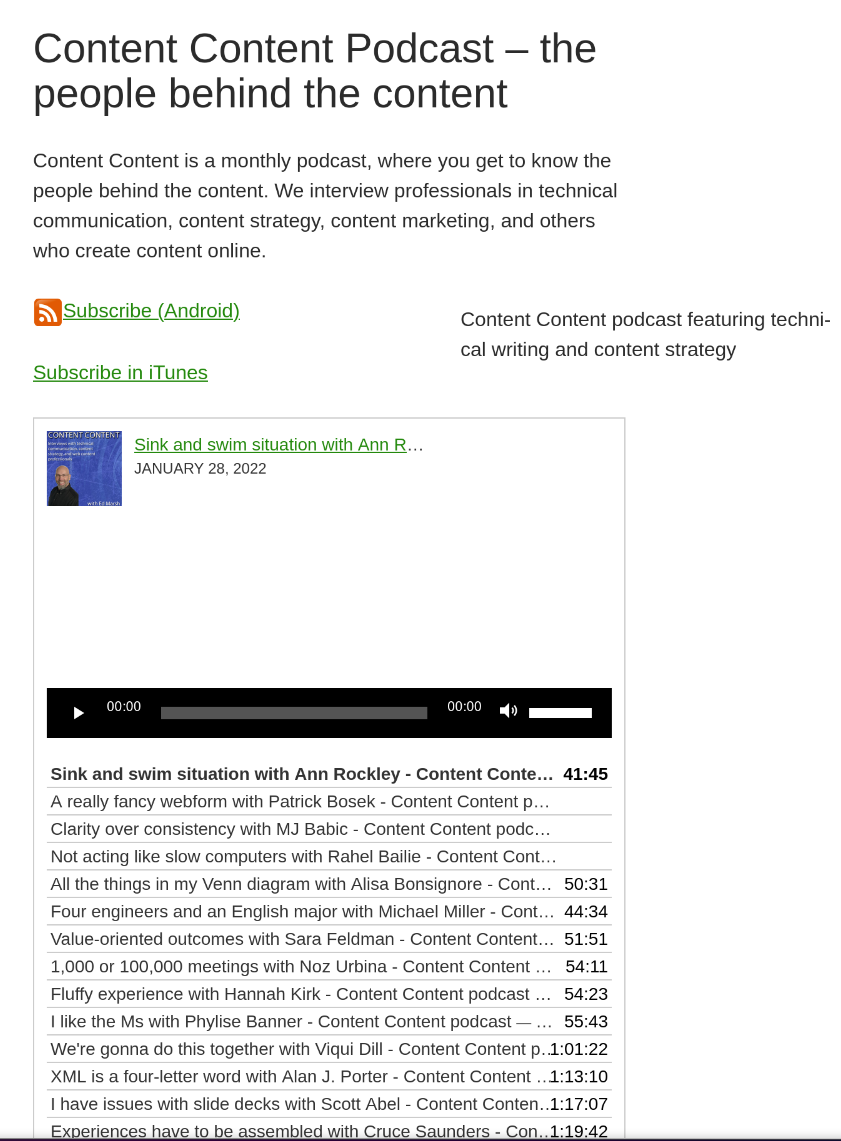The why: Behind my SSG conversion project
I put myself in every role of building out a website to better understand how content is programmatically consumed and displayed.
I started this project as a strategic effort to create a portfolio highlighting my technical writing and content strategy skills. I didn’t have any recent writing samples to share with potential employers or clients due to intellectual property (IP) laws, which I take seriously. The public-facing samples I did have were woefully out-of-date, as was my WordPress site. I didn’t realize just how out-of-date the site was until I got deep into this project. I needed to redesign not only the site, but its content.
This was a rare greenfield opportunity to:
- Audit a lifetime’s worth of content, dating back to LiveJournal blogs.
- Get rid of cruft.
- Reduce the costs of hosting and maintaining my own site.
- Understand how content is programmatically consumed and displayed to users.
- Learn some new skills without a lot of deadline pressure.
- Give back and explain to other technical communicators what building a modern web site from scratch entails.
Background
I knew from an early age I’d be involved in writing in some way. I interviewed friends on cassette in elementary school. I had my own 'zine. But since the days of the Commodore VIC-20, I’ve always been curious about and dabbled in software development. I started building websites in 1996, which led me to a Drupal site, and also a WordPress personal site I built in 2008:

That site and its scope expanded when I started my podcast in 2015:

When I decided to take this project on, getting hands-on appealed to me.
Technical goals
- Update a 10-year-old design.
- Retire a complex WordPress site that didn’t get much traffic and needed maintenance.
- “Quickly” revamp my website to increase my chances at getting hired.
- Add value by developing with SSGs, which isn’t a skill a lot of technical writers have. SSGs — like Eleventy that I chose — display the content that technical writers create.
- Learn newer technologies such as Nunjucks templating, that ended up leveraging old tech I’m familiar with like HTML and CSS.
Content goals
- Generate a steady stream of content to drive traffic and feature as writing samples.
- Give back to the technical writing community by documenting the process of building static site implementation process.
- Review all the content on my site and see if it’s promoting my career in the best light.
- Decide whether to archive old content, like those very early blog posts.
- Understand how to structure content not only for SSGs, but other programmatic use.
- Enjoy writing again.
- Do something for me.
Cost savings goals
My web host (mddhosting) is great and worth the cost while I was actively updating the site. I no longer needed the complexity and related costs of it, so my goals were to reduce my financial and labor costs:
- Minimize the overhead of maintaining a content management system. I no longer needed the complexity of a self-managed WordPress site. I hadn’t blogged in some time, and my podcast has been on hiatus since 2022. Maintenance included:
- Keeping up with plugin updates.
- WordPress updates.
- Processing the hundreds of spam comments that came through every day.
- Reduce hosting costs. SSGs don’t require heavy infrastructure such as a database, so they can be hosted in places that WordPress sites can’t. This gave me flexibility to move to a zero- or low-cost host. That doesn’t mean there are zero costs to hosting the site:
- My existing site host was also my mail server, so I had to find and set up my own mail hosting. To add to the frustration, my first choice was too difficult to set up. So far, Zoho Mail has been great.
- Upgrading my podcast hosting. My podcast archive puts me at the limit of free disk space and bandwidth on GitHub, so I had to offload that to a paid service. The upside to this is I get metrics I wouldn’t if they were self-hosted.
- Downsizing from a web host I’d undergrown meant I could re-allocate those resources.
While this solution is cheaper in long-term costs, there was considerable investment in upskilling, setting up infrastructure, creating templates, and making mistakes. I took on mail server costs and administration (which so far has been minimal).